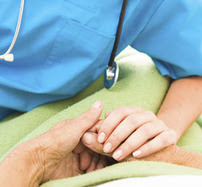
New health preparedness rule means withstanding the storm - which means better care for patients and better business for health care providers |
New health preparedness rule means withstanding the storm - which means better care for patients and better business for health care providers
Author: Nicole Lurie, M.D., M.S.P.H., Assistant Secretary for Preparedness and Response, U.S. Department of Health and Human Services
Published Date: 9/8/2016 4:11:00 PM
Category: Hospital Preparedness; Public Health Preparedness;
Published Date: 9/8/2016 4:11:00 PM
Category: Hospital Preparedness; Public Health Preparedness;
From Hawaii to Louisiana, recent storms have impacted the ability of health care facilities and providers to care for their patients. In Hawaii, power outages and debris left in the wake of a hurricane forced some facilities to close. In Louisiana flooding closed dialysis centers, clinics, doctors’ offices and more. While not as extreme as what we saw eleven years ago when Hurricane Katrina made landfall in New Orleans, the most recent emergencies showcase the continued need and demand for the best possible preparedness and response capabilities, particularly for healthcare providers and residential facilities that care for millions of at-risk populations across our nation.
Disruptions, whether in a home or facility, can rapidly result in life-threatening situations that necessitate evacuation or assistance from another hospital, community-based facility and provider, or a shelter. The Office of the Assistant Secretary for Preparedness and Response (ASPR) was created to lead HHS and the federal government in responding to the health impacts of disasters, and we know that achieving the best health outcomes following disasters requires planning across the entire continuum of care before a disaster strikes.
Over the years, we have drawn on lessons learned from disasters and collaborated with the Centers for Medicare and Medicaid Services (CMS) to improve the health care system’s ability to respond to crises, including on the development of a rule modernizing the disaster preparedness of the healthcare sector nationwide, published today.
This marks the beginning of a new era in emergency preparedness for our nation’s health care system—not just for hospitals but for other providers of essential support services. CMS issued this new rule to create a consistent foundation of emergency preparedness across the health care system, ensuring that providers across the spectrum are better positioned to respond to disasters and to ensure continuity of care for some of our most at-risk populations.
These providers include home health services, dialysis centers, long-term care facilities, community mental health centers, rural health clinics, intermediate care facilities for people with intellectual disabilities, critical-access hospitals, and others which together care for many millions of people across our nation.
They will be required to adopt fundamental emergency preparedness capabilities to best ensure the safety of their patients’ health as a condition of participation in Medicare and Medicaid. For example, providers and suppliers must have emergency plans and training for personnel – and run emergency drills twice a year to test these plans and programs, so that all are better positioned to work together to protect health in the face of a disaster. They must have a communication plan in place to coordinate with their patients as appropriate, as well as with public health officials, emergency management officials, and other health care providers within the city, county and state. For the health care industry, being disaster-ready actually may provide a competitive edge. While the health care providers go into their respective fields for altruistic reasons, the U.S. health care industry is a highly competitive business. Being able to maintain services and provide excellent patient care amidst a disaster is an essential business function.
ASPR provides a wealth of resources and expertise to help these healthcare providers develop the plans, policies, procedures, training, and testing they need to get started or to improve plans already in place.
For example, our Technical Resources Assistance Center Information Exchange (TRACIE) has a wide range of resources that providers and suppliers can use to implement the new CMS rule. ASPR TRACIE has sample plans, tools, templates, and training and exercise materials and provides access to expert technical assistance and an information-sharing exchange platform to assist the exchange of best practices, vetted tools, and information between public health, healthcare professionals, and many other emergency preparedness partners.
Many also may garner access to local community expertise through collaboration with one of the nearly 500 healthcare coalitions that have been sponsored by ASPR’s Hospital Program. Some healthcare coalitions may be able to assist with risk assessments and may have community-based exercises and training opportunities. Additional online training and resources are available at the HHS’ Centers for Disease Control and Prevention andHealth Resources and Services Administration as well as from the Federal Emergency Management Agency Emergency Management Institute.
While the physical destruction of a disaster may not always be preventable, the effect on patient care, as well as on the business of healthcare itself can be prevented if we are truly prepared. Today, CMS is putting in place meaningful improvements to the disaster preparedness of our nation’s healthcare system. This action will improve the resiliency of all of our communities and better protect the health of those in the path of disasters, whether small or large.
































No hay comentarios:
Publicar un comentario